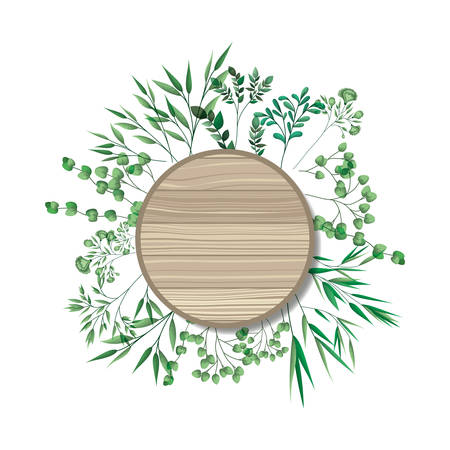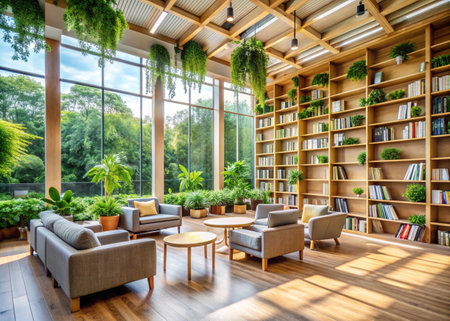Introduction to Biophilic Design
Biophilic design, at its core, is the practice of integrating natural elements and patterns into built environments to foster a closer connection between people and nature. Rooted in the concept of “biophilia,” which refers to our innate affinity for the natural world, this approach has become increasingly significant within British interior spaces. The United Kingdom, with its rich history of gardens, parks, and appreciation for the countryside, provides fertile ground for biophilic principles to flourish. In modern British homes and workplaces—often defined by their compact layouts and urban settings—the deliberate inclusion of natural colours, organic materials, and plant life offers a tangible way to improve mental wellness. As many Britons spend the majority of their time indoors due to weather or work culture, biophilic design provides an accessible means of bringing the outdoors inside. This not only enhances aesthetic appeal but also promotes psychological comfort and wellbeing—an outcome that is gaining recognition among architects, designers, and everyday homeowners alike.
Nature’s Palette: The Psychological Impact of Colour
The human connection to nature runs deep, and our response to natural colours is a vital element in biophilic design. Scientific studies have shown that exposure to natural hues—think forest greens, sky blues, earthy browns, and gentle stone greys—can measurably influence our mood and mental health. Within the UK context, where much of daily life is spent indoors due to climate, the psychological benefits of bringing these colours into our interiors become even more pertinent.
Understanding Colour Psychology in Biophilic Design
Research conducted by organisations such as the University of Exeter and the UK Green Building Council highlights that incorporating nature-inspired colour palettes can help reduce stress, improve concentration, and foster a sense of calm. For example, green shades are often associated with restoration and balance, while blue tones evoke tranquillity and mental clarity. Such findings are not just anecdotal but supported by robust wellbeing research across the UK.
Key Natural Colours and Their Psychological Effects
| Colour | Natural Inspiration | Psychological Effect | UK Research Reference |
|---|---|---|---|
| Green | Woodlands, meadows | Promotes relaxation, reduces anxiety | University of Exeter Medical School (2014) |
| Blue | Lakes, skies | Encourages calmness, enhances focus | Mental Health Foundation UK (2018) |
| Brown/Earthy Tones | Soil, tree bark | Fosters stability, grounding sensation | UK Green Building Council (2021) |
| Grey/Stone Shades | Pebbles, cliffs | Brings serenity, reduces overstimulation | CABE Space Report (2009) |
A Practical Approach for UK Interiors
Given the often overcast weather and limited daylight in Britain, leveraging nature’s palette indoors becomes a practical strategy for boosting everyday wellbeing. Integrating these colours through paint choices, furnishings, textiles, or even natural materials like timber or stone can create restorative environments aligned with evidence-based biophilic principles. By thoughtfully selecting nature-inspired hues tailored to local preferences and scientific insights, we can transform indoor spaces into sanctuaries that nurture mental wellness.

3. Incorporating Biophilic Colours into British Homes and Workspaces
Integrating nature-inspired hues within British interiors can be both straightforward and rewarding, especially when considering the nation’s unique design preferences and architectural characteristics. The UK is known for its period properties, Victorian terraces, and contemporary flats—each offering a distinct canvas for biophilic colour schemes. Start by observing your local landscape: the muted greens of the countryside, the soft blues of coastal skies, and the warm earthy tones found in parks and woodlands all provide a palette that resonates with British sensibilities.
Choosing Nature-Inspired Paints and Materials
Select paints in gentle sage green, dusky blue, or warm clay from reputable UK brands such as Farrow & Ball or Little Greene, which offer eco-friendly options with nuanced, nature-inspired shades. These colours are well-suited to the often-muted natural light found in Britain, creating spaces that feel restful rather than overwhelming. For an added layer of authenticity, look for paints with a matt or eggshell finish to evoke the organic textures seen outdoors.
Practical Tips for Application
Begin by introducing biophilic colours on feature walls or alcoves—a subtle nod to nature without overhauling your entire décor. Complement these painted areas with natural materials like oak, wool throws, and linen cushions in corresponding tones. In workspaces, consider painting skirting boards or door frames in forest green or slate blue for a touch of calm that supports concentration without distracting from productivity.
Accessorising for Cohesion
Finally, tie together your scheme with indoor plants and botanical prints—both readily available at local garden centres and independent shops. Use terracotta pots, reclaimed wood shelving, or woven baskets to echo the textures and colours found outdoors. By grounding your interior choices in familiar natural elements and accessible materials, you foster a sense of wellbeing that feels distinctly at home in the British context.
4. Case Studies: Success Stories from Across the UK
Biophilic design is gaining real traction across the UK, as architects and interior designers increasingly turn to nature-inspired colour palettes to support mental wellness. Below, we showcase a range of British case studies where biophilic colour schemes have enhanced interiors in homes, offices, and public buildings.
Homes: A Restorative Flat in Manchester
In Manchester, a Victorian terrace flat was transformed with calming sage greens and soft earth tones. The owner reported reduced stress levels and improved sleep quality after replacing stark white walls with hues inspired by local parks. Natural wood accents and plant-themed textiles completed the look, creating a retreat-like atmosphere amidst urban bustle.
Offices: Productivity Boost at a London Tech Firm
A tech company in Shoreditch overhauled its workspace using biophilic principles. Designers introduced feature walls in deep forest green and muted blues, echoing Hyde Park’s landscape. The result? Staff surveys indicated a 20% increase in reported workplace satisfaction and a marked reduction in afternoon fatigue.
Impact Overview
| Setting | Main Biophilic Colours | Wellness Outcome |
|---|---|---|
| Manchester Flat | Sage Green, Earth Brown | Reduced Stress, Better Sleep |
| London Office | Forest Green, Muted Blue | Higher Satisfaction, Less Fatigue |
| Edinburgh Library | Moss Green, Heather Purple | Improved Focus, Calmer Atmosphere |
Public Buildings: Edinburgh Library’s New Look
The main reading room of an Edinburgh library recently underwent a subtle transformation. Inspired by Scottish highland meadows, designers used moss green feature walls paired with heather purple soft furnishings. Visitors have commented on how the space now feels more welcoming and tranquil—a perfect environment for concentration and learning.
What We Can Learn from These Examples
Across Britain, these success stories demonstrate that integrating nature’s palette indoors can yield tangible improvements in wellbeing. Whether through restful greens reminiscent of rolling countryside or dusky purples evocative of wild moors, biophilic design is making British interiors healthier and happier places to live and work.
5. Cultural and Seasonal Considerations
When applying biophilic design principles in the UK, it is vital to recognise the interplay between local culture, weather patterns, and the distinctiveness of British seasons. The UKs relationship with nature is deeply rooted in its history—from sprawling countryside landscapes to cherished public parks—making the choice of natural colours both a cultural and emotional matter. For instance, shades inspired by native woodlands, such as moss green or earthy browns, evoke a sense of familiarity and comfort that resonates with many Britons.
Seasonal changes play a substantial role in colour selection. The long, grey winters often prompt a need for warmer, brighter hues indoors—think rich ochres or soft primrose yellows—that counterbalance reduced daylight and help lift spirits. During the summer months, cooler tones like sky blue or gentle sage can provide respite from occasional heatwaves and create a refreshing indoor atmosphere. This seasonal adaptability ensures interiors remain supportive of mental wellbeing throughout the year.
Moreover, local weather conditions—frequent rain and overcast skies—encourage the use of colours that add warmth without overwhelming spaces. Soft neutrals paired with botanical greens or muted floral tones can echo the British countryside while maintaining a cosy indoor environment. Additionally, referencing regional flora such as bluebells, heather, or wild poppies not only enhances aesthetic appeal but also fosters a deeper connection with one’s surroundings.
Incorporating these cultural and seasonal nuances into biophilic design ensures that spaces feel authentically British and tailored to local needs. Designers should consider both historical context and contemporary preferences when selecting palettes, creating interiors that are harmonious with both place and season. By aligning natural colours with the rhythms of UK life, biophilic design becomes more than an aesthetic choice—it transforms into an ongoing dialogue between people and their environment.
6. Tips for Getting Started
Embarking on your biophilic design journey doesn’t require a complete overhaul of your living or working space—small, thoughtful steps can make a real difference to your wellbeing. Here’s some practical advice tailored for those keen to bring the soothing influence of nature’s colours indoors, with a nod to options that are both locally sourced and aligned with British sensibilities.
Start Small and Build Gradually
If you’re new to biophilic design, begin by introducing natural elements in key areas such as the living room or workspace. Think about adding potted plants like English ivy or ferns, which thrive in indoor environments and are readily available from UK garden centres such as Dobbies or Crocus.
Choose Colours Inspired by Local Landscapes
When selecting paint, fabrics, or decorative accents, opt for hues found in Britain’s natural surroundings—think sage green reminiscent of the Lake District, muted blue-greys inspired by Cornwall’s coastline, or earthy ochres echoing Cotswolds stone. Brands like Farrow & Ball and Little Greene offer paint collections inspired by British heritage and landscapes.
Source Materials Responsibly
Seek out furniture and décor crafted from sustainable British timber, such as oak or ash. Look for local makers on platforms like Not On The High Street, or check for FSC certification at larger retailers like John Lewis. Incorporating wool throws from Yorkshire mills or ceramics from local potteries also adds an authentic touch.
Maximise Natural Light
Arrange rooms to capture as much daylight as possible. Use light, airy window dressings and consider strategically placed mirrors to reflect natural light deeper into your space. If privacy is a concern, frosted glass or sheer linen curtains (widely available through British suppliers) strike a balance between brightness and seclusion.
Connect with Nature Through Art
If live plants aren’t feasible everywhere, hang artwork depicting British flora and fauna or pastoral scenes. Many local artists sell prints inspired by the UK countryside—check out Etsy UK or visit regional art fairs for unique finds.
Final Thought: Embrace Local Expertise
Your biophilic design journey will be all the more rewarding if you tap into local knowledge. Visit your nearest garden centre for plant care tips specific to the British climate, consult with independent paint shops about colour palettes suited to our changing light, or seek out workshops run by regional craftspeople. With these actionable steps—and an appreciation for what Britain’s natural world has to offer—you’ll soon cultivate interiors that uplift both mind and spirit.


